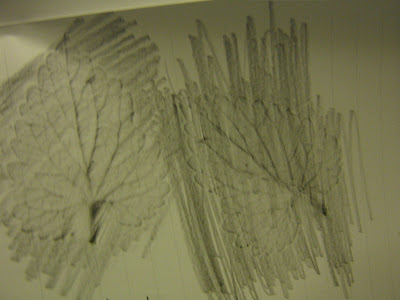
Comes understanding. The more I learn about plants, the more I realize I don't know. The world of plants and their intricacies is so vast and layered. Understanding plants on a simple and spiritual level is deeply satisfying, but in order to pass on the knowledge to the next generation I am finding that concrete understanding is most essential.
Take for instance, the simple twig. Or an herbaceous plant. Or second year growth.
As an herbalist these words get taken for granted; tossed around in the books with the assumption that us lay herbalists actually know what they mean. I know they assume because they aren't explained in the glossary or given any special attention. It wasn't until recently that I finally read how to identify the "second year growth" of Mullein. The first year is the basal rosette and the second year is when it sends up the stalk. (hmm, what happens in the third year?) With the rise of global warming, we are paying attention. I for one thought that the tree was confused... with her little buds already on the twig tips in December. Upon more studies.... I now understand these buds as the terminal buds, which hold the genetic information for spring's renewal and supply food for wildlife in the winter. An herbaceous plant actually has a useful definition.... it's not just a random term for low growing nifty plants that aren't trees.
"The inner bark was used to treat stomach disorders"
This is a common type of explanation we might find in an enthobotanical text or a modern herbal. For historical purposes this is very nice to know.
But I am left hanging by a thread. HOW on Earth do I get the inner bark? WHEN do I harvest it? Do I just take my pocket knife and start hacking away? WHAT part of the tree to I take from- the trunk? The twigs? How do I peel back the outer bark? What preparation do I make and what is the safety level? Not to mention that we don't even know what kind of stomach disorder we are dealing with. So many herbals are just infuriatingly uninstructional. They are theoretical.
I realize that the flip side of this can be books and studies that are entirely too dense and overwhelming to feel grounded.
I need to know more. I need to know more variety and how all this harvesting will impact my environment if I teach others to harvest it too. What if we all go harvest the Nettles? The birch bark for fires? The cattail for food and tinder?
The more I study, the more questions I have. And I am not sure I know where to go to get untangled. I'm certainly not going to "Herbal School". I have a family and a job. And I am very bad at following rules and orderly instructions.
I suppose the best thing to do is continue to apply myself to the experience of nature, take extremely good notes, (my latest obsession being leaf rubbings) and follow up with some of the actually good books. I'm finding the herbals less and less appealing, and the nature education books increasingly satisfying. Since I avoid buying herbs and prefer harvesting them myself, identification is essential. Which means botanical detail is essential too... and I'm on my own for learning it.
In case you are another baffled herbalist.... here are my latest favorite books you might find refreshing:
Hands on Nature by Lingelbach and Parcell / Vermont Institute of Nature Studies
Keepers of Life by Joseph Bruchac
The Tree Identification Book by George W.D. Symonds
Mountain Medicine by Tommie Bass
Although not released yet, I have high hopes for Kiva Rose's Medicine Woman Herbal :)
(no pressure!)
And, while not technically a book, the indispensable www.herbmentor.com





